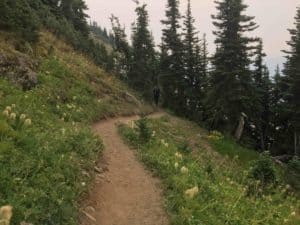In this post
- Start with Half Day Hikes
- Progress to Day Hikes
- Test Your Endurance on Multi-Day Hikes
- Understand Altitude
- Go Trekking!
Introduction to Trekking for Beginners
Whether you’re new to trekking or want to resume from years past, you will need to start somewhere. You’ve maybe talked to people? Bought or borrowed gear? Got your group together or not? Paid your deposit? So, what’s next you may ask?
Well, that depends on your objective and where you’re starting from. If for example, you’re wanting to achieve a 2-3 week trek in the Himalayas or anywhere else then you need to work up to it. We’ll show you 5 simple steps to get you there – starting from short hikes then progressing to longer multi-day hikes and finally your trek.

Practice makes perfect
From our experience, you need to practice. Practice makes perfect so they say! Plus, it’s a great opportunity to not only test and fine tune gear but also yourself, in all sorts of weather and terrain.
For example, we were planning a trip back to the Himalayas, deciding to hit up our local trails around where we lived. The weather was absolutely atrocious with Sydney encountering ‘cyclonic’ rain – in fact the heaviest rain in a day that Sydney had ever experienced. So heading out with our ‘lucky’ gore-tex raincoats, this was a test in the extremes. Well, guess what? They leaked like a sieve, so re-waterproofing was a must. Now imagine if we had taken off up to the remote Himalayas encountering a snow storm or heavy rain without testing our gear.
The above is just one example, but I could share with you other stories around choosing the right boots, backpack, trekking poles and clothing just to name a few.
So, let’s get started. It is recommended that you progress through these 5 steps for trekking for beginners. At any stage you can also refer to our section on how to prepare for a trek, which covers the 3 secrets to success – gear, fitness and mental toughness.

1. Start with half day hikes
Begin with short half day hikes of around 3-4 hours in your local neighbourhood. To start, don’t make it too tough, but you still want to test out those boots you’ve just bought, plus your pack amongst other things. Load your pack up with around 3-5kg to start, then progress from there over the next few weeks, building up your stamina slowly. Even on short hikes make sure you are taking sufficient gear e.g. clothing, rainwear, sun protection, first aid, water and snacks.

2. Progress to day hikes
Now you’re ready to progress to full day hikes. Try staying out for at least 6-7 hours – find some hills and other varied terrain. Great for testing out boots and yourself, especially any niggling injuries such as knees or ankles. Try firstly without trekking poles – then poles. Did it make any difference? How was your stability going uphill then coming down? How did your body cope with hours on the trail? Hydration – which works best, water bladder or bottles? Go out in gnarly weather – how did you cope? Work up to carrying heavier loads e.g. 10-12kg.

3. Test your endurance on multi day hikes
Now, here comes the serious stage. Multi day hikes (2-5 days) are great for testing how you handle walking day after day on the trail. You’re also sleeping out in the wilderness. You need to carry different gear and supplies and manage your water. Mental toughness also springs to mind. We are often reminded that the trek is 20% physical and 80% mental. How will you handle all the things that you think will go wrong? Plan for the worst – hope for the best. It can be helpful to go with a guided group to make life easier, especially if its your first overnight hike.

4. Understand altitude
They say nothing prepares you for altitude, other than altitude itself. Trekking for beginners would not be complete without a section on this. If you’re trekking in the Himalayas, Machu Picchu or planning to climb Kilimanjaro, you need to start thinking about altitude risks. Areas are often considered ‘high altitude’ if they reach at least 2,400m (8,000ft) above sea level.
Research beforehand about acute mountain sickness (AMS) and a plan to prevent it. For example, how many acclimatisation days do you have built into your itinerary? What is your hydration strategy? Do you have the correct insurance for rescue in case things go wrong? If you don’t think AMS is serious, remember this little known fact. More than 10% of people trekking to Everest Base Camp (5,380m/17,600ft) get evacuated before they even get there. Why you may ask? Well, from our research, we’ve observed that it is mostly from AMS. People heading up to altitude too quickly, not enough acclimatisation rest days, don’t hydrate, booking with a cheap operator – all of these are just some examples.

5. Go trekking!
If you’ve followed the above plan for trekking for beginners then there’s nothing left but to go trekking! Start here to see our ideas for how to enjoy and get the most out of your trekking adventure.
